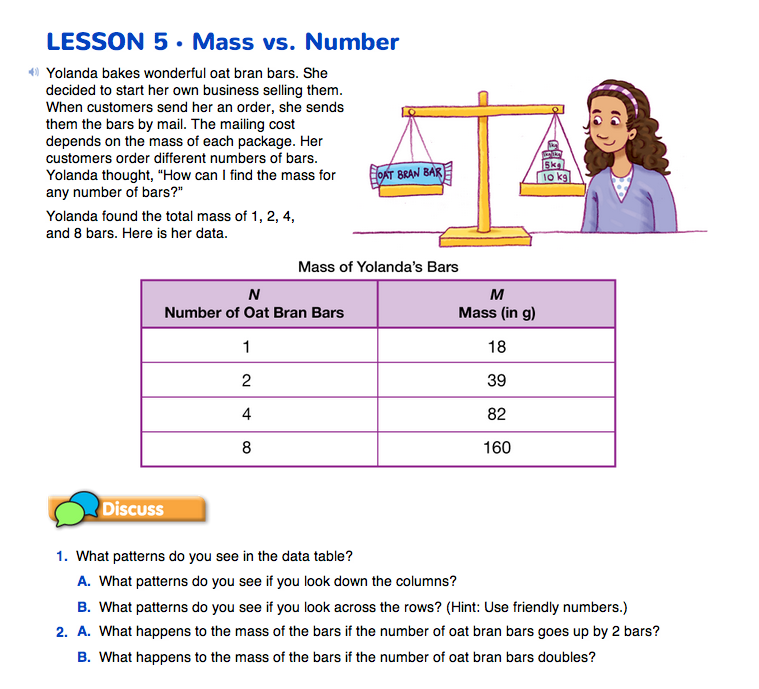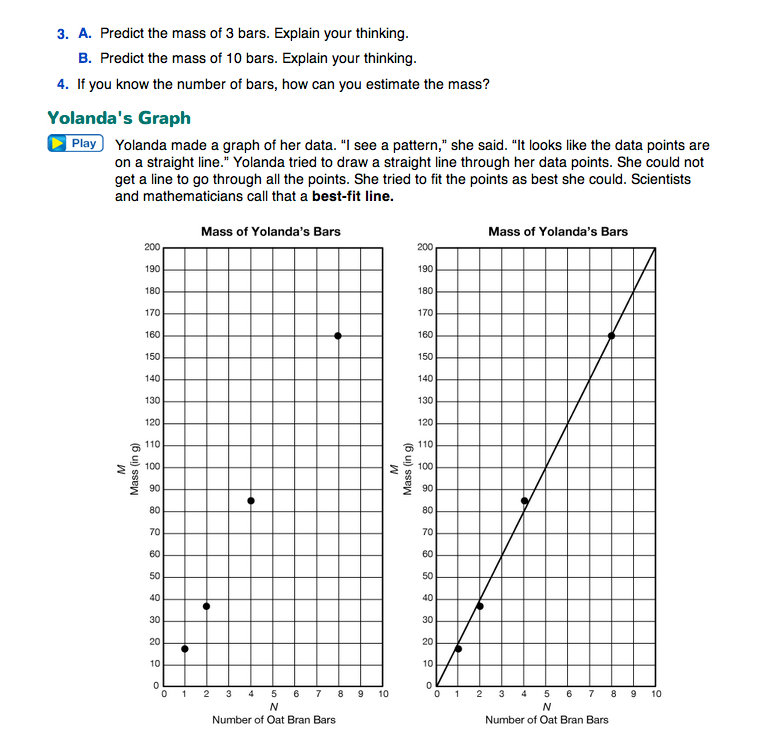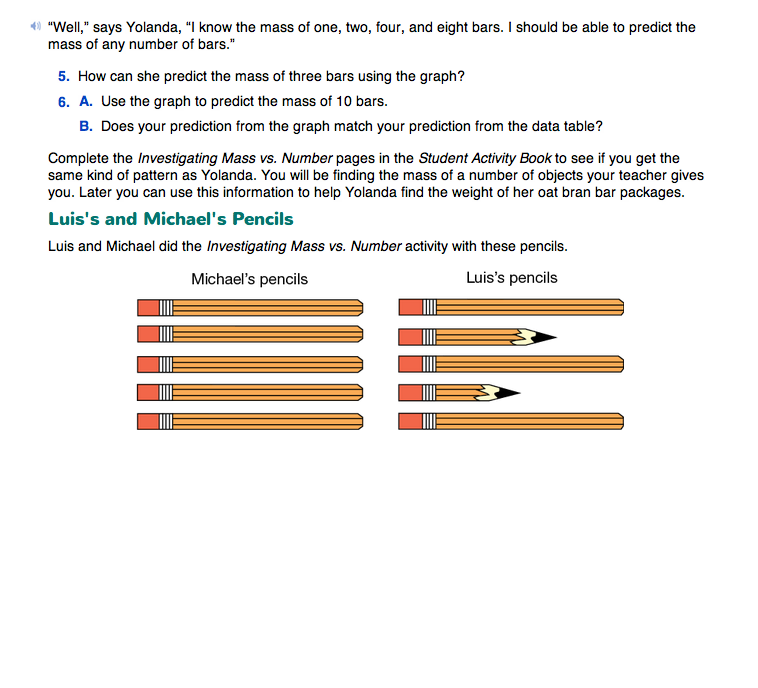Direct students' attention to the Mass vs. Number pages in the Student Guide.
Read the vignette together as a class and ask:
- What does Yolanda want to do? Why? (She wants to find the mass for any number of oat bran bars so that she can determine how much it will cost to mail them.)
- How will Yolanda's data table help answer her question? (She will record the mass of 1, 2, 4, and 8 bars. If she looks for patterns, she may find a strategy for finding the mass for any number of bars.)
- Why do you think Yolanda chooses the values of 1, 2, 4, and 8 bars for the number of bars? (1, 2, 4, and 8 is a doubling pattern and it may help her find a pattern in the mass column.)
Ask students to work in pairs to answer Questions 1–2 that ask them to look for patterns in Yolanda's data table.
Discuss students' findings by asking:
- What patterns do you see if you look down the columns? (As the number of bars doubles, the mass about doubles.)
- What patterns do you see if you look across the rows? (The mass is about 20 times the number of bars.)
- Do you see any doubles on the table? (Yes; 1 and 2, 2 and 4, and 4 and 8 are doubles in the Number column. There are also numbers that are almost doubles in the Mass column. For example, 18 is close to 20, and double that is 40, which is close to 39.)
- What happens to the mass of the bars if the number of bars doubles? (If the number of bars doubles, the mass of the bars just about doubles, too.)
Assign Questions 3–4 to student pairs. Then discuss students' strategies for making predictions based on the data table.
- What do you predict the mass of 3 bars would be? Explain why you think so. (Possible response: about 60 grams. Since each bar is about 20 grams, I estimated that 3 bars are about 3 times 20 or 60 grams.)
Other possible strategies include the following:
- Three bars comes in between 2 and 4 bars. So i looked between the same rows in the mass column and 60 grams is between 39 and 82 grams.
- One bar is 18 grams and 2 bars is 39 grams, so 3 bars will be 18 × 39 grams or 57 grams.
- What do you predict the mass of 10 bars would be? Explain why you think so. (Possible response: Since 1 bar is 18 grams, I used a friendlier number like 20. 10 bars × 20 grams each = 200 grams.)
- How can Yolanda find the mass for any number of bars? (Possible response: She could use patterns on the data table and multiply the number of bars by about 20 to find the mass.)
- Is there another tool that could help Yolanda predict the mass of any number of bars? (a graph)
Read the Yolanda's Graph section and assign Questions 5–6 to review drawing a best-fit line and using the line to make predictions from the graph.
Review that a best-fit line is a line that fits the points on the graph as closely as possible. A straight edge must be used to make a best-fit line. Remind students that a best-fit line:
- is a straight line (i.e., a best-fit line is not a crooked line that connects the points);
- fits the points as closely as possible;
- usually will have about the same number of points above it as below it;
- may or may not go through many of the points.
At this point students are ready to begin the laboratory investigation.
Affordable Sets of Standard Masses. A hardware store will have washers with masses of 1, 2, 5, 8 grams, etc. The cost of washers is probably small enough so that students can have a set of masses for a few dollars. Figure 1 shows such a collection that can be used as standard masses. Students can use a permanent marker to label the washers. Another option is to stack and tape groups of washers to create individual masses of 1, 5, 10, and 20 grams. Be sure to include the mass of the tape when determining the final mass.
















